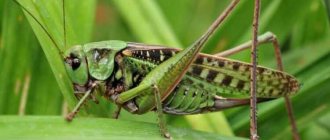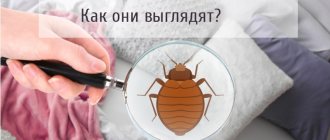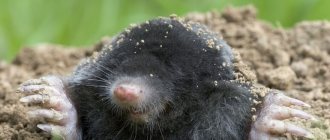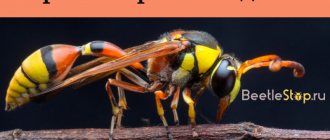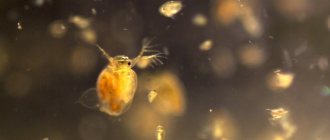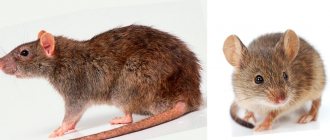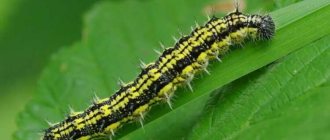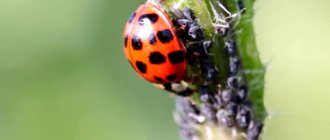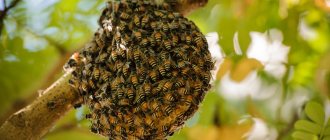Many people believe that fleas are the exclusive domain of those who have pets. And if they appear, it will be enough to simply treat the infected pet and the premises with special means to normalize it. However, they are very much mistaken, which they begin to realize as soon as they feel the bites of these pests. In this case, questions involuntarily begin to arise such as where fleas come from, what they look like, and, of course, how to deal with them.
Types of fleas
About 2000 species of all kinds of fleas live on the planet. These small blood-sucking parasites are incredibly tenacious - they are found even in the vast expanses of ice and snow of the harsh and uninhabitable Antarctica. The ubiquitous parasites will find someone to attach themselves to, both in the sky and underground! They live in bird nests and “fly away” with them to warmer climes. On earth they drink the blood of all warm-blooded animals that live on it. And you can’t hide from them even underground - all creatures that dig deep holes for themselves suffer from fleas no less than everyone else.
FACT
The word flea translated from Greek means wingless pump. It’s impossible to say more precisely, given that blood sucking in a flea can last from several seconds to several hours.
Purely theoretically, scientists distinguish human fleas, dog fleas, cat fleas, rat fleas, chicken fleas, and so on from a list of all domestic and wild animals living near humans. But in fact, these numerous fleas differ little from each other, both in appearance and in their ability to suck blood, wandering from one animal to another. The flea does not care about the fabrications of scientists - they attack everything that moves and smells of blood. And everyone’s blood is red and equally nutritious for bloodsuckers. So a dog flea can live on a cat without any permission from scientists, and a cat flea can live on a rat, and together they happily feed on human blood. So all these fleas belong to the same species - common fleas
.
In fairness, it should be noted that there are fleas with their own distinct characteristics, but they live outside their native spaces. So the Tien Shan
or
alakurt
is found exclusively in the Tien Shan valleys and the Baisaur mountains. These fleas are remarkable in that they are only seen in winter. From under the snow-covered grass they attack livestock in clouds, bringing them to complete exhaustion by spring. Fed with blood, the parasites quickly increase in size, changing their color from black to white.
Brazilian ground flea
- no less exotic look. It is also called penetrating. Females of this species of fleas are able to penetrate under the skin of the legs of animals, under the fingernails and toenails of humans. The body reacts to such an unceremonious invasion and attempt to settle right in the body of another creature as to any foreign body - with inflammation. Often this process leads to gangrene and amputation of limbs, and in advanced cases it is fraught with death.
And finally, the frost-resistant and almost legendary Antarctic flea
, which is found exclusively in Antarctica. These fleas live in bird nests and parasitize Antarctic petrels. Also not to be missed are the snowy petrel, silver-gray petrel, Cape pigeon and Wilson's storm petrel.
Common flea
What does it look like
The size of fleas ranges from 1-2 millimeters. The laterally flattened body is covered with a durable chitinous covering, so you cannot pick up a flea with your bare hands or simply crush it with your finger. In addition, the chitinous shell is completely covered with microscopic bristles and spines, which help the flea to firmly hold on to the animal’s fur. Three pairs of strong long legs allow the flea to move very quickly and jump high.
FACT
The flea is the jumpiest creature on earth. The height of its jump can reach one and a half meters, and its speed of movement in jumps is about 7 km. at one o'clock.
The small head of a flea is essentially a complex oral apparatus - a well-functioning piercing-sucking system. This system consists of several sharp stilettos with serrations for piercing and sawing through the skin and a proboscis for sucking blood. The absorption process occurs quickly and powerfully with the help of the muscular pump of the foregut. The search for a blood vessel encourages the flea to go deeper into the victim’s body not only with the head, but also with part of the body.
The color of fleas varies among species, ranging from all shades of brown from almost yellow to almost black.
How does it reproduce
Nature has endowed fleas with well-developed, strong and protected from external influences reproductive organs. The female has two pairs of ovaries, which are connected by oviducts at the uterus, from which the spermatic receptacle extends. The male individual has two testes ending in a genital claw, through which the seed enters the female’s body. During the mating process, the female is the active party - she herself climbs onto the male’s back and literally pulls his genital claw into her sperm receptacle. Mating can last several hours, despite the fact that the actual “transfusion” of seed from the male’s body into the female’s body takes no more than 10-15 minutes.
HYPOTHESIS
Who knows, maybe nothing human is alien to fleas, contrary to the statements of scientists that animals and insects supposedly do not enjoy mating games and subsequent fertilization. Elementary logic proves that if the mating process lasts longer than it is required for conception, then it has another motivation.
After fertilization, the female is ready to lay eggs. This labor-intensive process does not occur on an empty stomach, but with a sufficient amount of food, the flea is able to make from one to several clutches per day, each of which contains from 4 to 10 eggs. However, the “clutch” of a flea bears little resemblance to the classic version - the female shoots eggs from herself like a shotgun, scattering future offspring over a large area so that the larvae hatched from the eggs do not compete with each other for food. Under favorable temperature conditions, larvae emerge from eggs after 2-3 days. They feed on all organic materials, including the feces of adults. They grow for several weeks, molt three times, and then turn into a cocoon, from which an adult emerges.
FACT
At the developmental stage, a flea is capable of hiding under unfavorable living conditions. It can remain in the pupal state from one to several years. The signal to leave the cocoon is the smell of blood, which the flea always detects in any condition.
On average, a flea gives birth to five hundred offspring during its life.
How long does he live?
The life of a flea is short. She can live from three months to six months. Life expectancy depends on living conditions and the availability of adequate nutrition. The optimal temperature regime at which increased flea activity is observed is from plus 20 to plus 30. Despite the fact that the flea is a heat-loving insect, it tolerates extreme heat worse than cold. If the thermometer reaches 30 degrees Celsius, the flea begins to feel discomfort. At a temperature of plus 53, she dies slowly and painfully within half an hour. Instant death overtakes a flea at plus 70 degrees.
But low temperatures prolong the life of a flea several times. The lower the temperature, the slower the development process at each stage. And at the pupal stage, it can slow down for years. Theoretically, the pupa can, having fallen into suspended animation, survive any cataclysm from icing to a chemical attack, in order to be revived when favorable conditions occur. An adult flea is not as frost-resistant as a pupa and can die in severe frost. The critical lower mark for an adult common flea is considered to be minus 15 degrees.
If you want to learn more about the types of fleas, check out this article on our website.
It is possible to defeat parasites!
Antiparasitic Complex® - Reliable and safe removal of parasites in 21 days!
- The composition includes only natural ingredients;
- Does not cause side effects;
- Absolutely safe;
- Protects the liver, heart, lungs, stomach, skin from parasites;
- Removes waste products of parasites from the body.
- Effectively destroys most types of helminths in 21 days.
There is now a preferential program for free packaging. Read expert opinion.
Read further:
What do mosquitoes eat, besides blood, females and males, in the swamp and in nature?
How to treat flea bites with pulicosis?
Advocate against worms and fleas for cats and dogs: instructions for use, price, reviews
Centipede mosquito. Description, stages of development. What do big mosquitoes eat? Whether they bite or not. Damage from long-legged mosquitoes
Long worms in dogs: main types, description and methods of treating parasites in dogs
How long does a mosquito live: life expectancy, after a bite, in an apartment
Habitats of fleas in the apartment
Any living creature is ready to get food for itself at the risk of its life, but it prefers to bring prey to a safe, quiet and cozy hole, where no one will disturb it while sleeping or feeding its offspring. Fleas are no exception - they, like everyone else, need moments of rest in a safe, maximum-protected place. An animal that constantly runs around, bites insects from the surface of its skin, swims in various bodies of water, rolls in the sand and is generally unpredictable and dangerous - to put it mildly, not the calmest place to live. Therefore, fleas do not live on animals or humans. They jump on them only to get food for themselves. Once satisfied, they go to a safe place until the next attack of hunger. Yes, an animal may constantly have a lot of fleas in its fur, but these are not the same fleas, but new ones every time, so to speak, the second shift has arrived for lunch. The main criterion by which a flea chooses a place to live is a quick, easy and short path to a food source. And therefore they settle in the folds of the bedding where the animal sleeps or under the bedding, in and under carpets, in floor cracks, behind baseboards, in cluttered corners that the owner of the apartment never gets around to. It is in these places that you should look for fleas and their larvae.
If you are interested in why fleas appear in the house, read the corresponding article on our website.
How they appear
The period of appearance is mainly in summer and autumn. As a rule, they live in their own houses or in apartments on the lower floors. If we consider where fleas come from in an apartment, we can highlight some sources:
- move onto domestic animals;
- from the entrance;
- from basements;
- from neighbors;
- rat, if there are rodents;
- from the cracks.
Pets
If everything is clear with stray animals, then where do these parasites come from in domestic animals? The answer is very
Pet shampoos are very effective against fleas
simple. The owner can bring things or shoes from the street. Even if you pet a homeless animal just once, it jumps on things and travels to a new home.
Rodents
Rat fleas in an apartment - a few facts on how to recognize them:
- they are very jumping - in one jump they cover a distance of 30 cm;
- can go without food for about 3.5 months;
- in adulthood they are dark brown in color, and in adolescence they are black.
Domestic rodents can become infected with parasites from a cat or dog. There is no need to ignore it, since the body of rodents is small and the flea will eventually look for a new owner.
Wild birds
In relation to others, the bird flea does not change host. The temperature of the bird's skin is higher - this creates excellent conditions for the flea genus to flourish. It is very easy for wild birds to catch this infection. They are pestered by: earth fleas, sand fleas, fleas from animals.
How dangerous are fleas for humans?
Fleas are dangerous to human health and life.
Firstly, they bite very painfully - most fleas do not produce the enzyme that acts as a local anesthetic. The bite itches and itches, causing the need to constantly scratch it, not always with clean hands. In this situation, it is easy to introduce dirt and any infection into the wound. All this is fraught with inflammation with unpredictable results.
Secondly, flea bites can cause severe allergic reactions in people who are sensitive to bites and prone to allergies.
Thirdly, fleas are active carriers of worm eggs, of a huge number of different species. Not washing your hands after direct contact with fleas, for example, when combing your pet, can result in infection of the body with eggs of tapeworms, flukes, roundworms and other parasites.
Fourthly, fleas are carriers of deadly human diseases:
- plague, including bubonic
- encephalitis
- anthrax
- trypanosomiasis
- tularemia
- typhus and relapsing fever
This is quite enough to be wary of fleas and take decisive measures to destroy these blood-sucking parasites in your home. You can learn more about all the dangers of flea infestation in our separate article.
How to detect
It is very easy to detect in animals if you monitor your pets.
First: the behavior gives it away - they start to itch and become restless. If they have just appeared, then the pets practically do not itch.
But even at this stage you can follow up: carefully examine the fur and skin. Dark crusts will be visible in the abdomen and back - this is blood digested by the flea.
To detect it in a house or apartment, you need to regularly inspect your pets. In the morning, inspect your skin for bites. Check for flea droppings, this is very easy to do: walk on the floor with a light damp cloth, walk on the carpet in white socks, look at the seams of the mattress, carefully inspect the sofa and carpet.
Flea control methods
Any household insecticide, both in the form of a solution for cleaning floors and in the form of an aerosol, has a detrimental effect on fleas. The following companies successfully cope with the destruction of insects: “Dichlorvos Neo”, “Clean House”, “Raptor”. You can learn more about all flea remedies in our separate article. We also have a separate article about the most effective folk remedies for fleas and an article about herbs that fleas are afraid of. However, before buying this or that pesticide, try to soberly assess the situation in general and your financial capabilities in particular. If you live with a furry four-legged friend who walks outside every day, then you need to clearly understand that the animal is an inexhaustible source of fleas, which he constantly brings back from his walks. If you don’t make an effort and don’t protect your dog from flea attacks on the street, then it’s useless to fight them in the apartment. Only after this issue has been resolved, does it make sense to think about treating the apartment for fleas. Estimate how many cans of aerosol or other product you will need, calculate the costs you will incur without any guarantee of a positive result, and then call the pest control specialists and ask about the cost of their professional services. Most likely you will come to the conclusion that calling a professional will save you money, time and your own nerve cells. If fleas live in the basement of your apartment building, read a separate article about ways to destroy them in this case.
To prevent the fight against fleas from dragging on for months, or even years, two important factors must be taken into account - the specifics of flea reproduction and the conditions under which they die most quickly. If we take into account the fact that the female lays eggs in a very unconventional way, gushing them in different parts of the apartment, then it becomes obvious that it is impossible to establish the location of all the eggs. In such a situation, local treatment of the room may not give the desired result. Only total impact can give a quick positive effect. Considering that high air temperatures are deadly for fleas, it is enough to briefly create the microclimate of a Russian bath in the apartment. It's easier than it seems at first glance. Such an atmosphere is created in a few minutes! The best invention in the field of pest control - a hot fog generator - is capable of completely filling a room with hot insecticidal clouds in a few minutes. This installation deals a double blow to all types of insects including fleas. If some insects do not die instantly from the high temperature, then they will be overtaken by the pesticide, which in a mist-like state will penetrate into any microscopic cracks of all surfaces of the room, climb into closed niches and wall voids, crawl to places where only a flea can crawl or its egg can roll. . This professional method of killing fleas is the best that is available on the pest control market today.
IMPORTANT
If you know a more effective and faster way to get rid of fleas in residential areas, call our hotline! We are ready to adopt an even more effective remedy and use it for the benefit of all those suffering from fleas with the benefit of the inventor. We improve our work every day, trying to extract the maximum from available resources.
When fighting insects, the main thing to remember is that any problem can be easily solved if you choose the right product.
On our website you can find a number of useful materials prepared by our specialists. From them you can learn how to tell if there are fleas, why fleas bite people, how to get rid of fleas on a dog, how to remove cat fleas, how to comb out fleas, how to get rid of fleas in a chicken coop and what soap to use for fleas.
